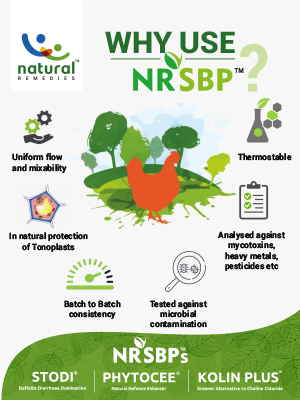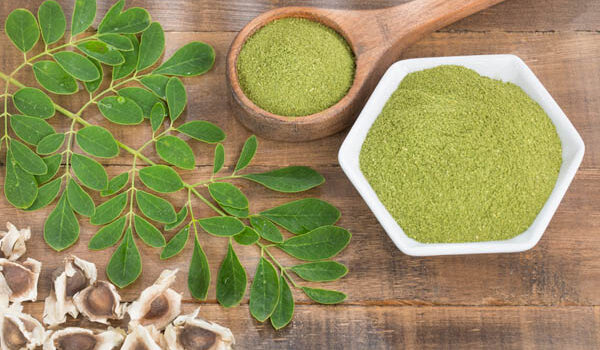 Standardized Botanical Powders (SBPs): Part 3 of 5
Standardized Botanical Powders (SBPs): Part 3 of 5
The organic revolution in the food industry has taken the world in its stride. The consumer awareness of the health benefits of natural products shall keep this revolution going. There has been tremendous growth in the global organic animal food industry. The global organic poultry market alone is expected to make $7.67 billion in 2021. Although there have been several discussions to meet the desired market demand, there is little talk around the quality and consistency of natural products. With this in mind, we have designed this series of articles, which sheds light on the importance of standardization in botanical powders. In the last two issues, we have discussed with evidence what standardized botanical powders (SBPs) are, and how an SBP comes into being.
The current article emphasizes the importance of procurement of high-quality raw material by focusing on its authenticity, safety, and documentation to keep good consistency in the concentration of the phytoconstituents. Finally, these would result in high-quality SBPs.
The medicinal property of a plant is determined by the natural phytoactive chemicals they possess. Phytochemicals, such as alkaloids, terpenes, phenolic compounds, and flavonoids are encapsulated by a specialized membrane known as tonoplast. A tonoplast is a semipermeable membrane surrounding a vacuole in a plant cell. Once the SBP is fed to the animal, the tonoplast disintegrates in the gut of the animals, releasing the phytochemicals. These phytoconstituents have been reported to exhibit various biological effects for instance adaptogenic, hypoglycaemic, antioxidant, immunomodulatory, anti-inflammatory, anti-cancer, and gut enhancing properties. However, the biosynthesis of phytochemicals is significantly affected by several factors such as environmental stress conditions like seasonal changes, geographical location, plant maturity, soil type, farming practices, genetic make-up, and post-harvest processing to mention a few.
Natural Remedies is the number 1 veterinary herbal healthcare company in India with presence in more than 30 countries across the globe. Through its world-class Research and Development centre, Natural Remedies offers a category of science-based Phytogenic feed additives, called Standardised Botanical Powders (SBPs). In this series of articles, Dr. Raina Raj, Head of Marketing at Natural Remedies, provides in-depth knowledge of what SBPs are, and their benefits in the poultry diet.

In India, manufacturers can purchase crude botanicals from local Bazaar, where 52% of their stock comes from temperate and tropical forests, 25% from wild-grown regions, and 20% from farms or plantations. Scientifically, harvesting botanicals from wild sources not only damages the biodiversity of the region but also there is no accountability to the variation in their phytochemical constituents, which poses an issue when botanical compounds need to be standardized. Therefore, it is important to ensure that plants selected for their medicinal uses contain relatively fewer variations in phytochemical constituents. Standardization is essential to maintain consistency in the biological outcome when consumed by animals. Hence to overcome these issues the standardization process begins at the farm where the medicinal plants are cultivated under supervision and can be harvested at the optimum time of growth for the best utility of the phytochemicals.
Contracted supervised farming
One of the strategies to procure superior quality raw botanicals with the least variability in their phytoconstituents is through contracted supervised farming. This helps monitoring of the raw product for its authenticity, safety, and least variability in the desired phytochemical; ensuring organic methodology is used in the plant cultivation process; harvesting at the specific age of maturity, when the phytochemicals are at their peak; to the farming community this generates a steady source of income; this generates gainful employment in rural communities; they receive support and guidance throughout the cultivation process; they receive input after analysis of the soil and water samples for pH, conductivity, organic carbon, phosphorus, potash, and residual pesticides. Since the plants are grown organically, pesticide use is avoided, which in turn helps the environment. However, to ensure that the crops receive sufficient nutrients the manure used as fertilizer is also assessed, for physical and chemical properties such as colour/odour, moisture percentage, pH, conductivity, organic carbon, N-P-K, CN ratio, micronutrients like Fe, Mn, Zn, etc. A technical team supervises the land for soil waterlogging, major weed infestation, and irrigation and assists the farmers to solve any issues in the field. In general, it is a win-win situation for both the contracting herbal company and the farmer.

Assessment of authenticity
The herb samples collected from the farm should be evaluated extensively for their genuineness at the physical, microscopic, and molecular levels (Figure1). The authenticity of the herbs is already established at the seed level during collection. Ultimately, all these assessments are necessary for the standardization process of the SBPs and to provide consistency in each batch to give the desired biological effect.

Assuring safety
To ensure the SBPs are safe, the herbs are collected from a pristine area where there is no heavy presence of contaminants. Also, the safety is ensured with the harvested raw herbs through testing for pesticides, heavy metals, and mycotoxins/aflatoxin. The samples can be tested for pesticide residues with Gas Chromatography – Electron Capture Detector (GC-ECD) and Gas Chromatography-Tandem Mass Spectrometry (GC-MS/MS) as shown in Figure 3. Heavy metals such as Cadmium, Arsenic, Lead, and Mercury are evaluated with an inductively coupled plasma mass spectrophotometer (ICP-MS) as shown in Figure 4. Heavy metal, pesticides and mycotoxins occurrences in herbs, if not maintained below safe levels can lead to life-threatening toxicity in animals. Aflatoxin and mycotoxins are detected using high-performance liquid chromatography with fluorescence detection (HPLC-FLD) as shown in Figure 5.


Figure 4: Heavy metals in the raw material are detected by ICP-MS

Traceability of the raw material to its origin
The whole process of cultivation to harvest should be well documented, just as travel information in a passport Figure 6. Supervised farming helps maintain scientific recording that gives details at each stage of growth, if at all there are any untoward variations noticed in the performance of the product, it can be traced back and re-evaluated with scientific data. Post-harvest the product should be well labelled too (Figure 7). So that finished goods can be traced to which farm they originated from. The whole raw material procurement process becomes more science-based which helps in the standardization of SBPs and is eco-friendly, by maintaining the biodiversity of the forests, avoiding pesticides, and ensuring customers a safe end product free of synthetic constituents.


In our next issue, we shall elaborate on the “Check, Assessment, and Revalidation of SBPs.”






